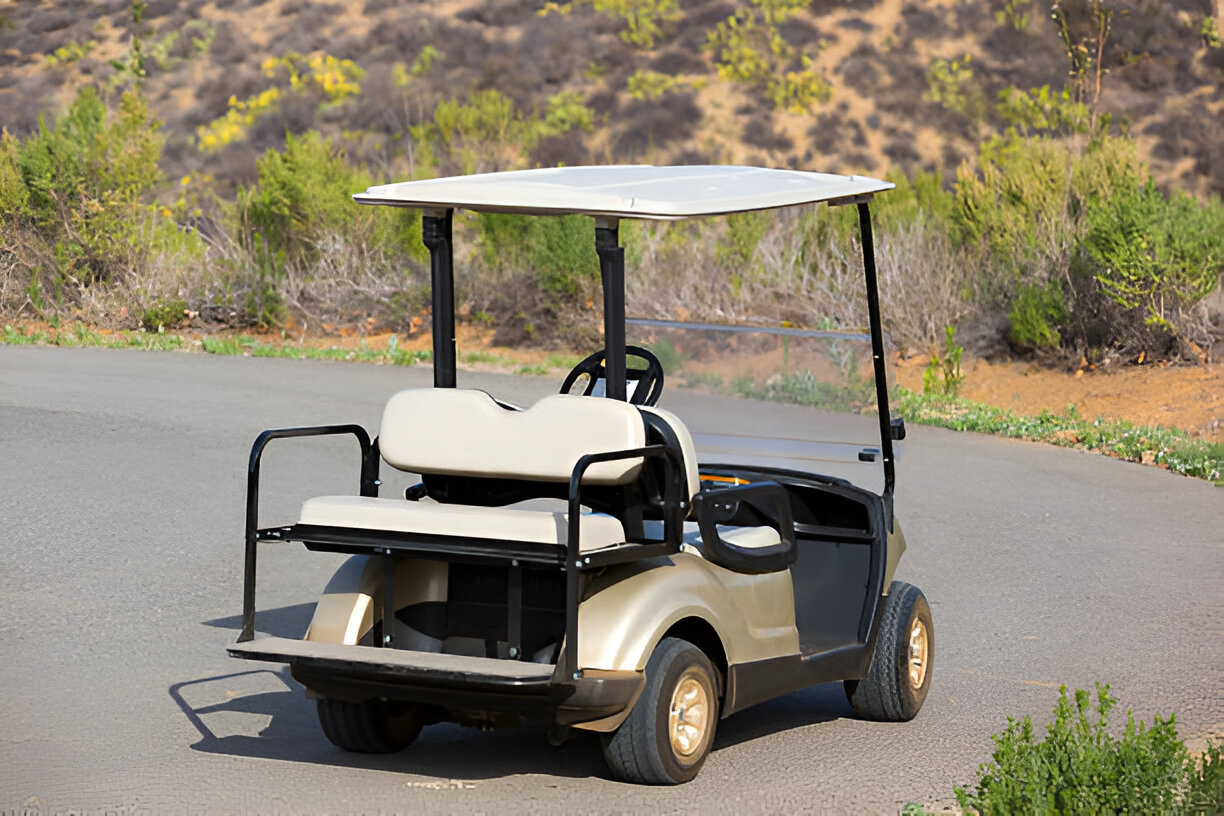Table of Contents
ToggleWhat Are Golf Cart Brakes?
Golf cart brakes are critical components designed to slow down and stop your cart efficiently. Unlike regular automobiles, golf carts typically operate at lower speeds. However, brake failure in a golf cart can still lead to accidents, making regular maintenance vital. There are several types of brakes used in golf carts, each with its own characteristics and servicing needs.
Types of Golf Cart Brakes
1. Mechanical Drum Brakes
Mechanical drum brakes are one of the most common types of brakes found in golf carts. These brakes use friction generated by brake shoes pressing against a rotating drum attached to the wheels. The simplicity of their design makes them reliable, but they can wear out over time, requiring regular maintenance.
Servicing Needs: Mechanical drum brakes typically need inspection every few months. Check for wear on the brake shoes, adjust the tension if necessary, and ensure that the braking system is free from debris and dust buildup. A squeaking noise when braking often indicates that the drum brake shoes need replacement.
2. Hydraulic Disc Brakes
Hydraulic disc brakes, though less common in standard golf carts, are gaining popularity in higher-end and customized carts. These brakes provide superior stopping power by using hydraulic fluid to press brake pads against a rotor, creating friction to stop the cart. They are known for their effectiveness, especially in wet conditions.
Servicing Needs: Hydraulic disc brakes require regular checks for fluid levels. If you notice a decrease in braking power, it may be due to air bubbles in the hydraulic system, requiring bleeding. Brake pads also need to be replaced periodically to ensure consistent performance.
3. Regenerative Brakes
Many electric golf carts come equipped with regenerative brakes. These brakes use the electric motor to slow down the cart, converting kinetic energy back into stored energy in the battery. While this type of braking system can reduce wear on traditional brake components, it still relies on mechanical braking for a complete stop.
Servicing Needs: The mechanical aspects of regenerative brakes, like pads or drum components, still need regular inspection. You’ll also need to monitor the battery system closely, as improper regenerative braking can affect battery health.
4. Electric Motor Brakes
In addition to regenerative braking, some electric golf carts are fitted with electric motor brakes. These brakes function by reversing the electric motor to create resistance, effectively slowing down the vehicle without using traditional brake components.
Servicing Needs: While electric motor brakes don’t require the same level of mechanical maintenance, the motor itself should be checked regularly. Inspect the wiring and electrical connections to ensure that the braking system operates smoothly.
Signs Your Golf Cart Brakes Need Service
Just like in any other vehicle, golf cart brakes give several signs when they need attention. Here are a few key indicators that it’s time to get your brakes serviced:
- Squealing or grinding noises: Unusual sounds when you apply the brakes are usually an indication that something is worn or out of alignment.
- Reduced braking power: If you notice that your cart takes longer to come to a stop or you need to press harder on the brake pedal, it’s a sign that the system needs inspection.
- Vibrations while braking: This could indicate uneven wear on the brake pads or problems with the rotors or drums.
- Soft or spongy brake pedal: This is often a sign of a hydraulic issue, such as air in the brake lines or a fluid leak.
Regular servicing is key to ensuring the safety of your golf cart’s braking system. If you’re experiencing any of the above symptoms, you may want to seek brake repair for golf carts in Millsboro to ensure your vehicle’s safety and functionality.
Importance of Regular Brake Maintenance
Routine maintenance of your golf cart brakes can prevent more significant issues down the line. Not only does it keep your cart operating smoothly, but it also ensures the safety of the driver and passengers. Here are a few essential maintenance tips:
- Regular Inspections: Brake components, such as pads, shoes, and fluid levels, should be checked at regular intervals. Don’t wait for problems to arise; proactive inspections can help you avoid costly repairs.
- Timely Replacements: Brake pads, shoes, and other wear-prone parts should be replaced as soon as they show signs of deterioration. Delaying this can lead to further damage to other parts of the brake system, such as rotors and drums.
- Proper Lubrication: For mechanical drum brakes, lubricating moving parts is essential to prevent wear and keep the system functioning smoothly.
- Fluid Checks: For hydraulic brakes, maintaining the correct brake fluid level is critical. If the fluid level is low, it could be a sign of a leak or air in the lines, which needs to be addressed immediately.
Why You Should Never Ignore Brake Issues
Even though golf carts may not travel as fast as cars, brake issues should never be ignored. A malfunctioning brake system can lead to accidents, injuries, and costly repairs. Whether your cart is used for personal enjoyment or commercial purposes, keeping your brake system in top shape is essential for ensuring long-term reliability.
Regular servicing not only prolongs the life of your brake components but also saves you from potential damage to other parts of your cart. For example, a worn-out brake shoe can affect the drum or rotor, leading to more expensive repairs. Preventive maintenance can help you avoid these issues altogether.
Conclusion
Understanding the different types of golf cart brakes and their servicing needs can go a long way in keeping your cart safe and functional. Regular maintenance is essential for performance and safety, whether you have mechanical drum brakes, hydraulic disc brakes, or a more modern electric braking system. Be sure to pay attention to signs of wear and address issues promptly. And if you’re in the Millsboro area, consider seeking professional Sentman Custom Karts for expert servicing and peace of mind.
